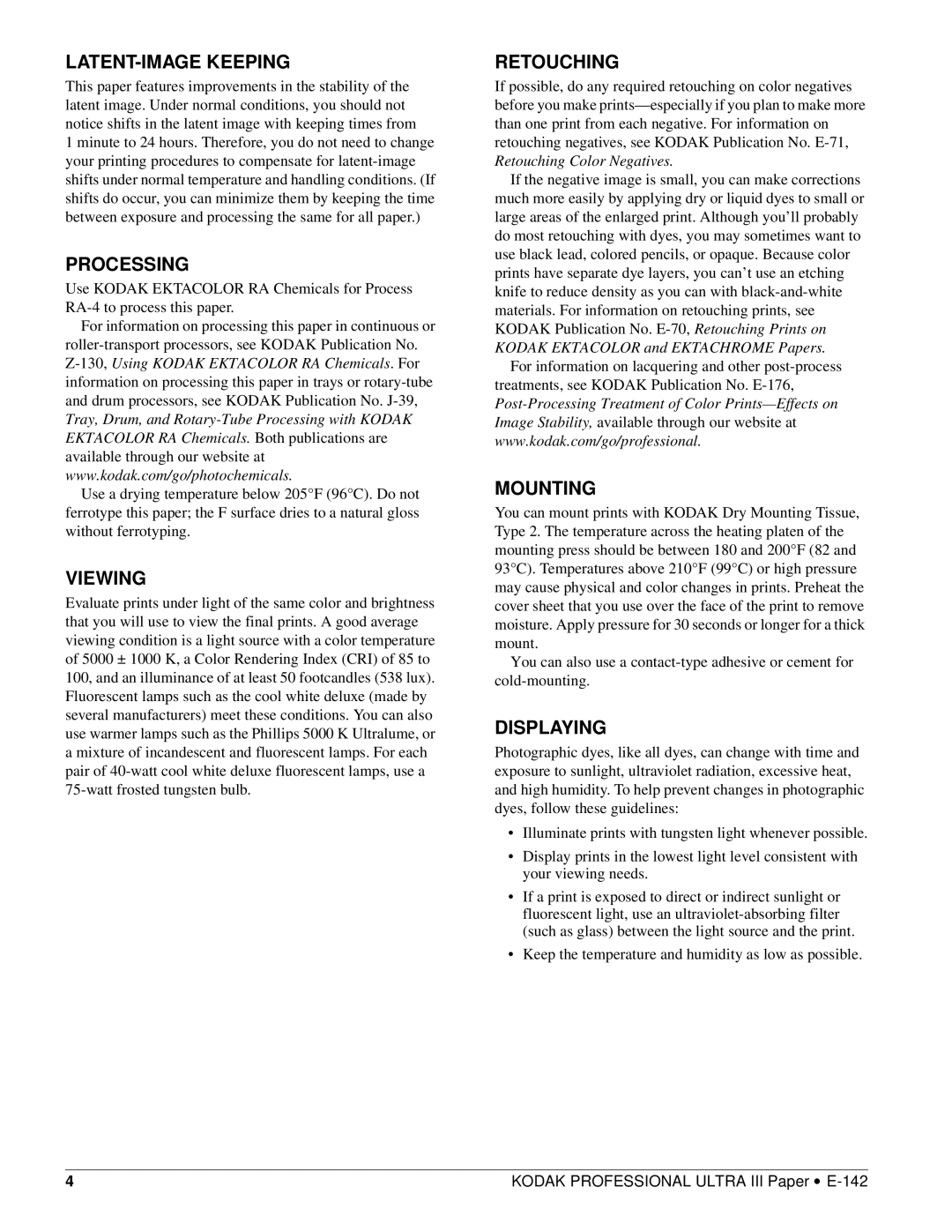LATENT-IMAGE KEEPING
This paper features improvements in the stability of the latent image. Under normal conditions, you should not notice shifts in the latent image with keeping times from
1 minute to 24 hours. Therefore, you do not need to change your printing procedures to compensate for
PROCESSING
Use KODAK EKTACOLOR RA Chemicals for Process
For information on processing this paper in continuous or
Use a drying temperature below 205°F (96°C). Do not ferrotype this paper; the F surface dries to a natural gloss without ferrotyping.
VIEWING
Evaluate prints under light of the same color and brightness that you will use to view the final prints. A good average viewing condition is a light source with a color temperature of 5000 ± 1000 K, a Color Rendering Index (CRI) of 85 to 100, and an illuminance of at least 50 footcandles (538 lux). Fluorescent lamps such as the cool white deluxe (made by several manufacturers) meet these conditions. You can also use warmer lamps such as the Phillips 5000 K Ultralume, or a mixture of incandescent and fluorescent lamps. For each pair of
RETOUCHING
If possible, do any required retouching on color negatives before you make
If the negative image is small, you can make corrections much more easily by applying dry or liquid dyes to small or large areas of the enlarged print. Although you’ll probably do most retouching with dyes, you may sometimes want to use black lead, colored pencils, or opaque. Because color prints have separate dye layers, you can’t use an etching knife to reduce density as you can with
For information on lacquering and other
MOUNTING
You can mount prints with KODAK Dry Mounting Tissue, Type 2. The temperature across the heating platen of the mounting press should be between 180 and 200°F (82 and 93°C). Temperatures above 210°F (99°C) or high pressure may cause physical and color changes in prints. Preheat the cover sheet that you use over the face of the print to remove moisture. Apply pressure for 30 seconds or longer for a thick mount.
You can also use a
DISPLAYING
Photographic dyes, like all dyes, can change with time and exposure to sunlight, ultraviolet radiation, excessive heat, and high humidity. To help prevent changes in photographic dyes, follow these guidelines:
•Illuminate prints with tungsten light whenever possible.
•Display prints in the lowest light level consistent with your viewing needs.
•If a print is exposed to direct or indirect sunlight or fluorescent light, use an
•Keep the temperature and humidity as low as possible.
4 | KODAK PROFESSIONAL ULTRA III Paper • |
